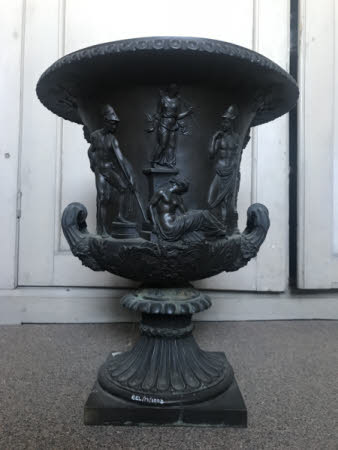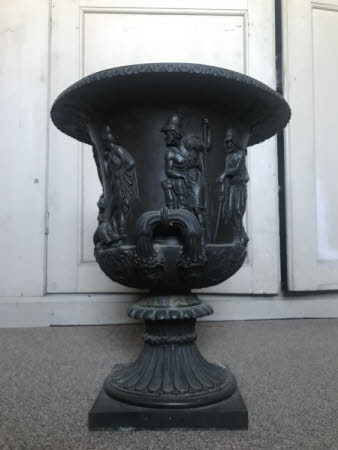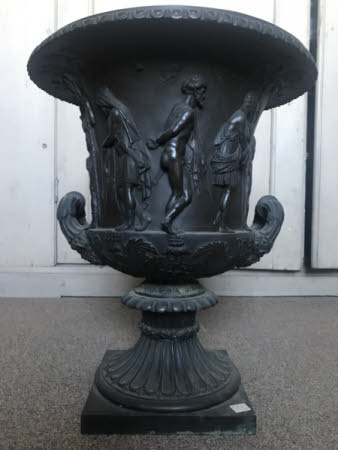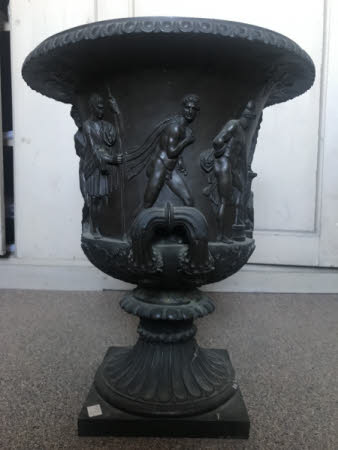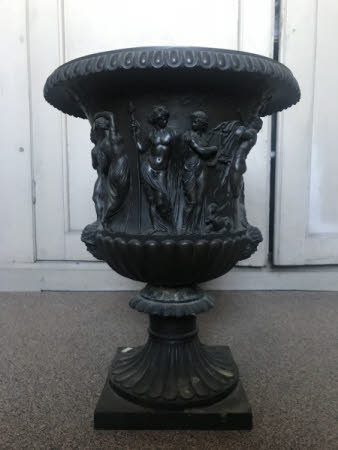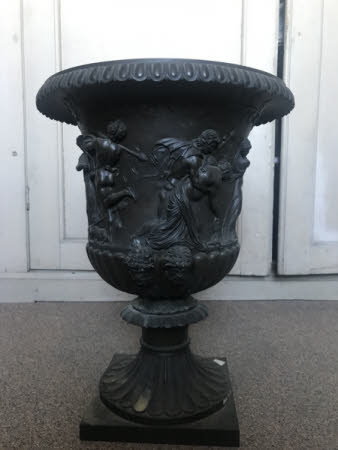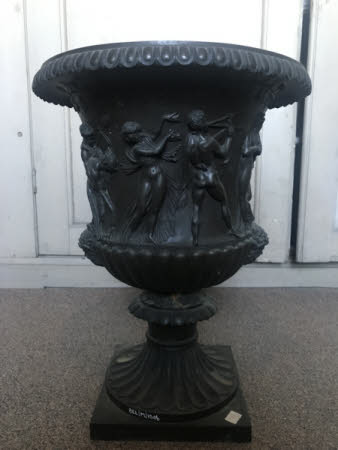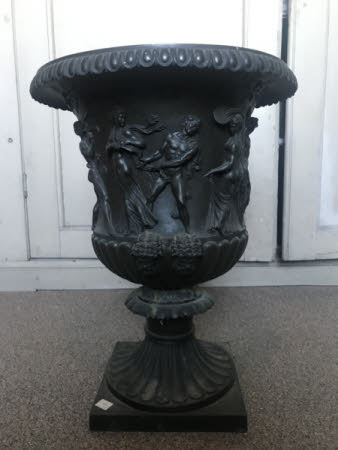The Medici and Borghese Vases
Category
Art / Sculpture
Date
circa 1780 - circa 1850
Materials
Bronze
Measurements
470 x 210 x 210 mm
Place of origin
Rome
Order this imageCollection
Belton House, Lincolnshire
NT 435419
Summary
Bronze, The Medici Vase and The Borghese Vase, Italian, c.1780-1850, after the antique. The Medici Vase is decorated with a vine motif and a relief believed to show the story of Iphigenia. Below is a frieze of acanthus leaves and two fluted loop handles rising from paired satyrs’ heads on either sides. The vase is mounted on a tapering fluted stem and a square plinth. The Borghese vase is decorated with a vine motif and a relief depicting the thiasus: a Bacchanalian procession presided over by Dionysus and his wife Ariadne. The lower section is gadrooned with paired mascarons shaped as satyrs’ heads. The vase is mounted on a tapering fluted stem and square plinth.
Full description
These are bronze reductions of classical Athenian marble kraters called the Medici and Borghese Vases. The original Medici Vase dates to second half of the 1st century AD and was first recorded in the inventory of the Villa Medici, Rome in 1598 (Haskell and Penny 1981, no.82, p.316). It was removed to Florence in 1780 and displayed soon after in the Uffizi where it remains today. The original Borghese Vase was made in the 1st century BC. Now in The Louvre, Paris, it was discovered in 1566 in the gardens of Sallust and was later acquired by the Borghese family for their villa in Rome (Haskelll and Penny 1981, no.81, p.315). Popular as garden and interior ornaments, copies of the Medici and Borghese Vases were regularly sold as a pair. High-quality bronze reductions were produced in Rome from the late 18th century by Francesco Righetti (1738-1819) and Giacomo (c. 1731-85) and Giovanni Zoffoli (c.1745-1805). See a signed pair by Zoffoli at Saltram (NT 871621.2, 871621.7); an unsigned pair at Osterley (NT 771969.1, 771969.2) and other bronze copies at Penrhyn Castle (NT 1421796.1, 421796.2) and Hinton Ampner (NT 1529966.1, 1529966.2). See also a British Coade stone copy of the Borghese Vase at Stourhead (NT 562904). Alice Rylance-Watson October 2018
Provenance
Purchased with a grant from the National Heritage Memorial Fund (NHMF) from Edward John Peregrine Cust, 7th Baron Brownlow, C. St J. (b.1936) in 1984.
Credit line
Belton House, The Brownlow Collection (acquired with the help of the National Heritage Memorial Fund by the National Trust in 1994)
References
Haskell and Penny 1981: Francis Haskell and Nicholas Penny, Taste and the Antique, The Lure of Classical Sculpture 1500 - 1900, New Haven and London, 1981, nos. 81-2, pp.315-6
